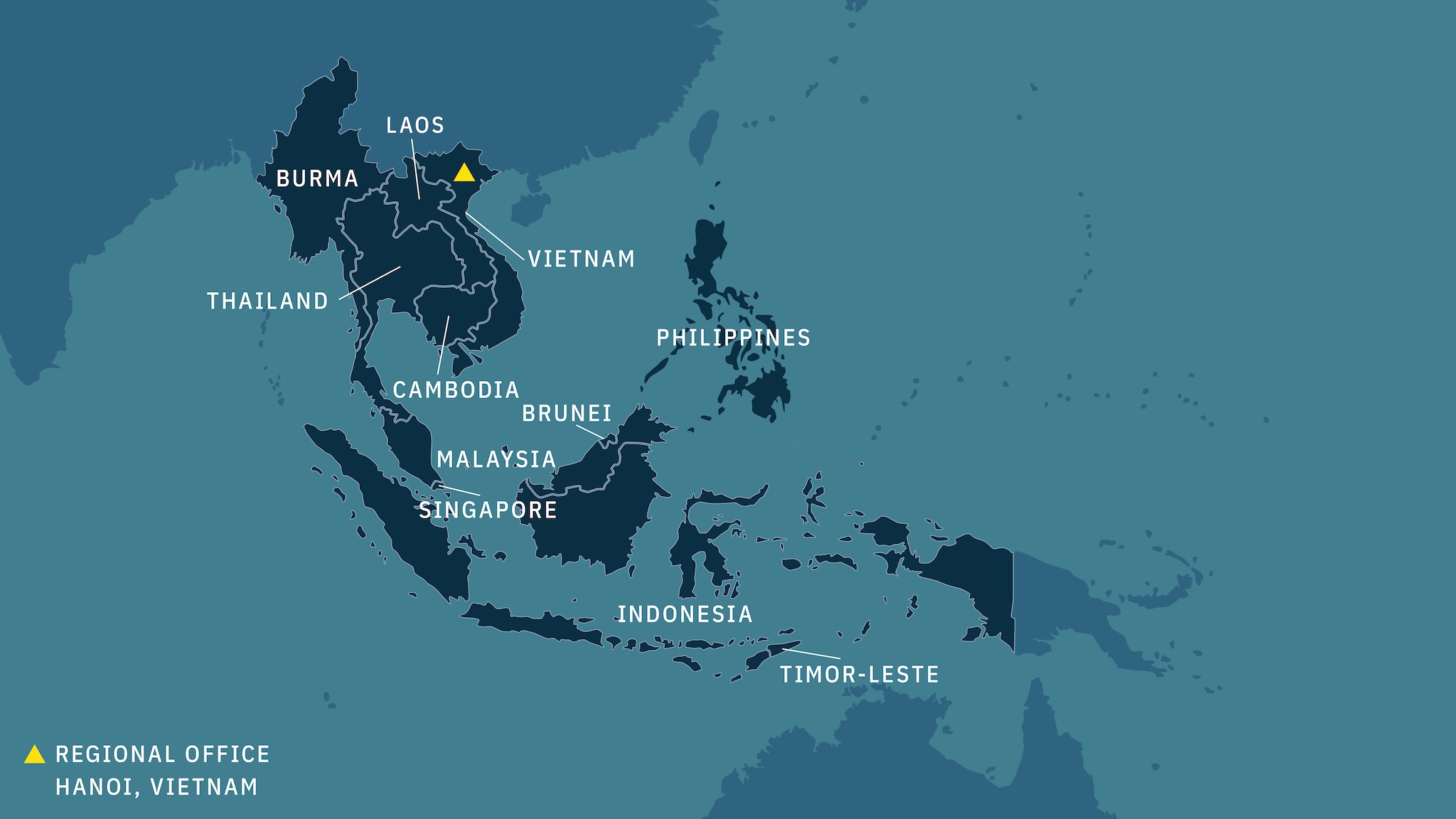At a glance
Established in 2021, U.S. CDC’s Southeast Asia (SEA) Regional Office, located in Hanoi, Vietnam, builds on decades of CDC investments and public health collaborations across the region. Strategic global partnerships strengthen health systems in the region, reducing strain on U.S. resources and enhancing readiness against health threats. U.S. CDC advances regional health security to stop disease outbreaks at their source, making America safer.

Overview

The Southeast Asia region is home to more than 657 million people and consists of various CDC assets including the CDC regional office in Hanoi, Vietnam, and seven bilateral CDC country offices.
CDC investments in the region began with malaria technical assistance in the early 1950s. It continued with successful smallpox eradication efforts and led to the development of country offices throughout the region that have been instrumental in strengthening the public health workforce.
Countries throughout the region are utilizing health security systems strengthened through years of collaboration with CDC. This work includes data collection through established respiratory surveillance systems and deployment of trained epidemiologists, laboratorians, risk communicators, and public health emergency managers which were deployed to effectively respond to the COVID-19 pandemic.
The SEA Regional Office works closely with seven bilateral country offices, CDC staff assigned to international organizations, headquarters-based programs, ministry counterparts and partners throughout the region to build core public health capacities and respond to public health threats. Apart from core bilateral partnerships with host government’s ministries and U.S. Embassy sections and agencies, CDC also works with several regional U.S. Government agencies, multilateral organizations, such as the Association of Southeast Asian Nations, and non-state actors to implement public health programs. In addition to personnel in the region, subject matter experts at CDC headquarters in Atlanta, GA, provide technical support to these offices, as well as to partners across the region.
Key areas of focus
Reflecting U.S. CDC’s Global Health Strategy, SEA is focused on responding to health threats in the region by building core public health capacities in:
- Antimicrobial resistance
- Border health and migrant health
- Disease elimination
- Infectious diseases prevention and control
- Laboratory systems
- One Health
- Pandemic preparedness and vaccine planning
- Public health emergency management
- Surveillance and response
- Workforce development
Regional goals
U.S. CDC and partners are collaborating to:
- Enhance existing and develop new partnerships to advance health security priorities.
- Enhance and expand the public health workforce.
- Strengthen the capacity of governments to effectively respond to public health emergencies.
- Enhance partners’ use of data to improve public health response and development of policy.
- Strengthen standardized surveillance systems to better understand and predict disease trends.
- Promote science and innovation in public health.
- Strengthen public health laboratories.
- Improve ability of countries in the region to address vaccine preventable diseases.
- Work to eliminate diseases of public health importance.
